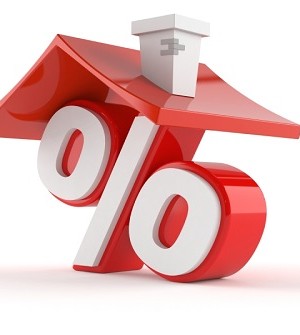- 4 Unexpected Things I’ve Learned From Buying My First Mobile Home Park
- How Ironic: America’s Rent-Controlled Cities Are Its Least Affordable
- U.S. homes are still a bargain on the international market
- Getting The Best Possible Quality Photos On MLSs and Syndicated Sites
- Home buyers in these markets have the upper hand
Rates Still Low

Unemployment and Job Creation
The fundamentals just aren’t acting in a traditional manner. Take the unemployment report for December for instance. There were 252,000 jobs created last month, a respectful number in light of the 321,000 November jobs. For the past two months, that’s a very, very respectable figure. In fact, the unemployment rate fell to 5.6 percent, down from 5.8% from the November report. For the year, nearly 3 million new jobs were created, the highest count since 1999.
Initially, equities rose. But after a bit of data parsing, other figures came to light. More people were on the payroll but the amount of pay workers received actually fell. Hourly earnings dropped by five cents per hour and wage gains for the year increased only 1.7 percent. There are more jobs, but people are getting paid less. For the economy to move forward with any significance, employees need to take more home so they can spend it.
And one more item investors looked at in the December numbers? Labor participation. Labor participation is the number of available workers, employed or looking, compared to the total population. The labor participation rate fell to a 37 year low at 62.7 percent. That paved the way for triple digit losses and the carnage didn’t stop on Friday. Yes, the headline unemployment rate was respectable but that’s not what investors were paying attention to. Lots of jobs, but marginal pay.
Interest Rates
Mortgage rates for real estate investors are near historic lows and long term financing costs for a 15 year loan can easily be found in the low 3.00 percent range and 30 year fixed rates in the high 3.00’s. Why the fall? Where else do investors put their funds in today’s global economy?
Wall Street and beyond is still trying to figure out how low oil prices will affect various economies around the world. Sure, lower prices at the pump is a consumer win and it costs less to get goods where they need to go, again, keeping consumer prices low. But it also hurts economies where oil is a major player. Oil companies, refineries and transports all lay off employees until, or if, the price rebounds.
Russia? Oil is the only export of any importance and the price of oil is having a major negative impact on the economy and affecting the entire region. There really is nothing else Russia depends upon for revenue. The European Central Bank is considering more quantitative easing to get their economies on track and bolster the Euro. Japan and Asia in general are experiencing their own version of economic malaise with Japan officially in a recession after two successive quarterly GDP contractions.
Where do investors place their funds in such an environment? For a while, Wall Street was a prime choice until commodities began to fall. Now, the safe bet is U.S. Treasuries and mortgage bonds. Yes, the 10 year Treasury is yielding below 2.00% and the benchmark 30 yr FNMA 3.5 coupon closed above 105 once again. The yields may be scant but they’re safe. That’s why investors are continuing to put funds into mortgage bonds, driving rates lower.
Vacancy Rates and Price Appreciation
Now, hold that thought. Consider real estate as an investment. According to Case-Shiller’s most recent numbers, home prices in November increased by 5.5 percent compared to November 2013. At the same time, home prices have increased 33 months in a row. Name any other asset class that can make such a claim.
At the same time, landlords are able to increase rental rates at its quickest pace in six years. Vacancy rates are also at lows not seen in 20 years, this information from the U.S. Census Bureau. Real estate investors are able to buy units that appreciate in value and leverage the investment with ultra-low mortgage rates. With these low rates and rent increases not only are real estate investors cash flowing each month they’re cash flowing like never before. Try to name any investment that appreciates over time while paying a monthly dividend.
When reviewing an investment portfolio and it’s filled with various stocks, bonds and mutual funds yet with no real estate holdings, it might be time to consider adding real estate to the mix. No need to analyze candlestick charts or pay close attention to economic reports every week. If it cash flows, it’s something to consider.




 100% Secure
100% Secure
You must be logged in to post a comment Login